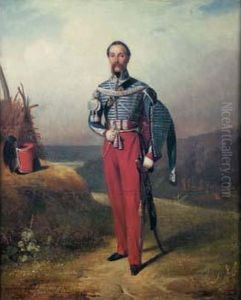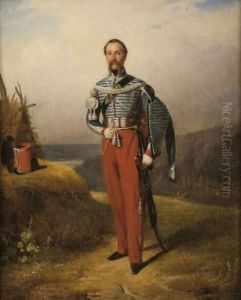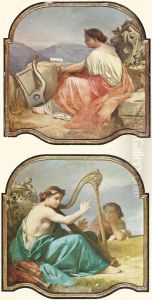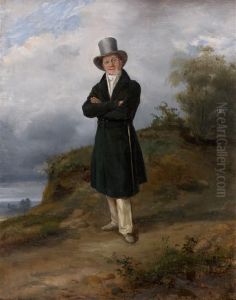Jules-Alexandre Duval-Lecamus Paintings
Jules-Alexandre Duval-Le Camus was a 19th-century French painter, born in 1814 in Paris. He is known for his genre scenes, landscapes, and portraits, often imbuing his works with a sense of domestic intimacy and tranquility. Duval-Le Camus was the son of the painter Jean-Baptiste Camus, which suggests that he was exposed to the art world and its practices from a young age. This early exposure likely played a significant role in his development as an artist.
In terms of his artistic education, Duval-Le Camus studied under the tutelage of Paul Delaroche, a prominent French painter known for his meticulously crafted historical and neoclassical scenes. Under Delaroche's guidance, Duval-Le Camus honed his skills in drawing and composition, which would become hallmarks of his artistic output.
Throughout his career, Duval-Le Camus exhibited his work at the prestigious Paris Salon, an official art exhibition of the Académie des Beaux-Arts in Paris. His debut at the Salon was in 1835, and he continued to participate regularly, earning public recognition and critical acclaim for his paintings. His most famous works include 'The Convalescent' and 'The Young Mother,' both of which exemplify his ability to capture the nuances of everyday life with sensitivity and a fine attention to detail.
Duval-Le Camus' style was characteristic of the Biedermeier period, with a focus on simplicity, elegance, and unassuming subjects. His works often reflected the values and tastes of the emerging bourgeoisie, who favored depictions of private life and domestic scenes over grand historical narratives or mythological subjects. His paintings are noted for their warm color palettes and the gentle rendering of light, which add to their serene and comforting atmosphere.
Jules-Alexandre Duval-Le Camus passed away in 1878, leaving behind a legacy of works that continue to be appreciated for their quiet beauty and their portrayal of 19th-century bourgeois life. His contributions to French art are not as widely known as those of his contemporaries, but his work remains a valuable window into the era's aesthetic sensibilities and social mores.








